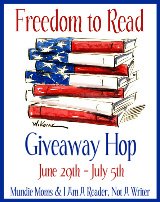
Happy Fourth of July! Welcome to my blog! The week of 29 June – 5 July, I’m participating with more than two hundred other bloggers in the “Freedom to Read” giveaway hop, accessed by clicking on the logo at the left. All blogs listed in this hop offer book-related giveaways, and we’re all linked, so you can easily hop from one giveaway to another. But here on my blog, I’m posting a week of Relevant History essays, each one focused on some facet of the American War of Independence. To find out how to qualify for the giveaways on my blog, read through each day’s Relevant History post below and follow the directions. Then click on the Freedom Hop logo so you can move along to another blog. Enjoy!
Today for a few hours, my sons and I will be at the Joel Lane Museum House in historical clothing, talking with visitors about patriot Joel Lane and the Revolutionary War in North Carolina. If you’re in the Raleigh area, stop by and say hello. Musket drills and firings, games for the children, tours of the house, and plenty of cool lemonade.
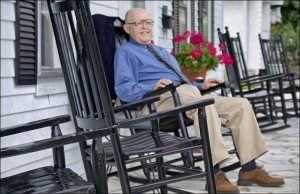
Relevant History welcomes John Buchanan, author of the highly regarded The Road to Guilford Courthouse: The American Revolution in the Carolinas. For over two decades he was Chief Registrar of The Metropolitan Museum of Art, in charge of worldwide art movements. His other books are Jackson’s Way: Andrew Jackson and the People of the Western Waters; The Road to Valley Forge: How Washington Built the Army That Won the Revolution; and a novel of the Cold War, The Rise of Stefan Gregorovic. His short stories have appeared in Ellery Queen’s Mystery Magazine. For more information, check his web site.
*****
About a year ago, as he was preparing to retire as Secretary of Defense, Robert Gates said that in the future, any advisor to a President of the United States who recommended placing a large American land army on the Asian continent “…should have his head examined.” In the context of the American Revolution, the same might be said of British generals, backed by George III’s ministers, who cut themselves off from the lifeline of the British Navy and invaded the dangerous American backcountry. “Gentleman Johnny” Burgoyne lost his army at Saratoga in the wilds of northern New York State. And three years later our story begins with Lieutenant General Charles, Second Earl Cornwallis, deep in the Carolina backcountry, chasing ghosts.
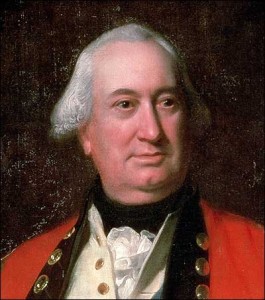
In October 1780, Cornwallis was poised in Charlotte, North Carolina, to drive northward, reclaim the state for the crown, destroy the remnants of the Continental army he had scattered at the Battle of Camden, and then perhaps push on into Virginia. But on 7 October, 1100 Tory militiamen under the British officer Major Patrick Ferguson, who were protecting Cornwallis’s left wing, were wiped out at King’s Mountain, South Carolina by backcountry militia and Overmountain Men from beyond the Appalachians. His left wing in the air, believing incorrectly that he was in danger from thousands of rebels descending on him from the west, Cornwallis retreated to winter quarters in South Carolina.
Once again the British attempt to re-conquer the Carolinas had run up against a fierce guerrilla campaign that had begun in the backcountry in the summer of 1780. The irony of the Revolution in South Carolina is that it was started by the Low Country Rice Kings and saved by the backcountry militia, whom the Rice Kings scorned as a “pack of beggars.” Yet it was those men, horsemen all, who waged a sweeping war of movement, maintained their allegiance to the Cause despite two disasters to Continental armies, demoralized the Tory militia, and held their own against British and provincial regulars in classic guerrilla style in actions large and small, some lost to memory in the mists of time.
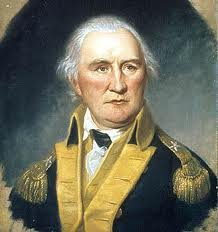
But they could not win the war in the South by themselves. Their great contribution was to the gain the time necessary for there to appear on the scene two Continental generals who had much to teach Lord Cornwallis and his subordinates about the art of war: Major General Nathanael Greene and his deputy, Brigadier General Daniel Morgan.
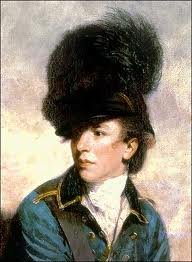
Fearful that Morgan’s detached force of regular light troops, the cream of Greene’s army, was threatening one of his major backcountry posts, Cornwallis sent his celebrated cavalry commander, Lieutenant Colonel Banastre Tarleton, to deal with the threat. Morgan and Tarleton met in battle on 17 January 1781 on the field of Cowpens, South Carolina. In the tactical masterpiece of the war, Morgan combined regulars and militia and destroyed most of Tarleton’s light troops, the eyes and ears of Cornwallis’s army.
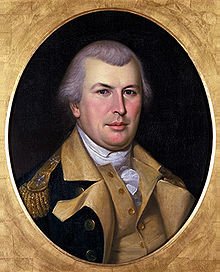
In a rage over his loss, Cornwallis burned his cumbersome baggage train and set off in pursuit of Morgan, and then Greene after the two American forces merged. At Guilford Courthouse, North Carolina, Greene and Cornwallis fought a battle described by Greene as “long, obstinate, and bloody.” By eighteenth-century standards, Cornwallis won, for at the end he occupied the field while Greene withdrew. But in winning, His Lordship had ruined his army. His losses heavy, deep in the backcountry swarming with foes, Cornwallis was forced to withdraw to Wilmington, North Carolina, on the coast. There he wrote to a fellow general, “I assure you that I am quite tired of marching about the country in quest of adventures.” His plan now was to “bring our whole force into Virginia” where “a successful battle may give us America.”
While Nathanael Greene artfully combined the respective talents of regulars and militia and proceeded to liberate South Carolina and Georgia, Lord Cornwallis pursued his delusion of a “successful battle” to win America. He turned his worn and decimated army northward, where he found more adventures and fulfilled his American destiny: in a village in Virginia called Yorktown.
*****
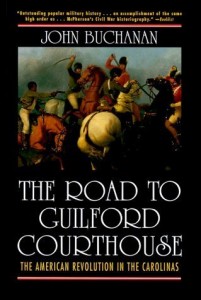
A big thanks to John Buchanan. He’ll give away an autographed copy of The Road to Guilford Courthouse in trade paperback format to someone who contributes a legitimate comment on my blog today or tomorrow. Delivery is available worldwide. Make sure you include your email address. I’ll choose one winner from among those who comment on this post by Thursday 5 July at 6 p.m. ET, then publish the name of all drawing winners on my blog the week of 9 July. And remember that anyone who comments on this post by the 5 July deadline will also be entered in the drawing to win one of two autographed copies of my book, Regulated for Murder: A Michael Stoddard American Revolution Thriller.
**********
Did you like what you read? Learn about downloads, discounts, and special offers from Relevant History authors and Suzanne Adair. Subscribe to Suzanne’s free newsletter.







